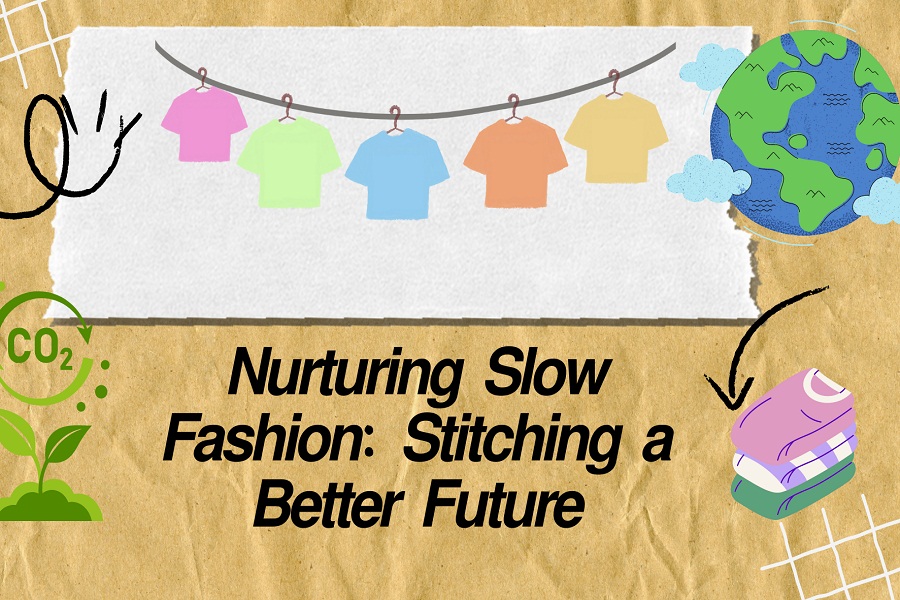
Published :
Updated :

While the world is racing towards fast fashion, a team of students from the Mass Communication & Journalism Department at Bangladesh University of Professionals (BUP) recently decided to take a stand.
They organized an insightful workshop on Slow Fashion, titled 'Nurturing Slow Fashion: Stitching a Better Future', aiming to educate and inspire their peers about the benefits of a more sustainable and mindful approach to clothing.
But what exactly is Slow Fashion? It's an approach that emphasizes quality, sustainability, and ethical production over fast fashion's rapid, mass-produced trends. Slow fashion encourages thoughtful consumption, where every piece of clothing tells a story and serves a purpose beyond fleeting styles.
On the other hand, fast fashion prioritizes speed and low cost, producing large quantities of clothing quickly and cheaply. This model relies on rapidly changing trends, encouraging consumers to buy more frequently and dispose of old items just as fast.
In contrast, slow fashion emphasizes quality over quantity. It focuses on producing fewer pieces made to last, using sustainable materials and ethical production methods.
"The Western world says slow fashion is a movement. But slow fashion is not a movement; it is a practice," said Sheikh Saifur Rahman, Senior Journalist and Heritage Textile Expert at Haal Fashion.
He added, "Practicing slow fashion is in our blood. When Bengali women wore sarees, they would later make nakshi katha from those sarees. This is sustainability."
The workshop offered practical advice on practising slow fashion and making wardrobes more sustainable. Attendees learned about the importance of decluttering and redesigning existing clothes and creating new items from waste materials through upcycling.
Another speaker at the workshop, Rokaiya Ahmed Purna, Fashion Designer and Founder of the Design in Bangladesh Foundation, said, "We can redesign our waste clothes in our way, reducing waste."
She added to her worn sneakers, "I designed these sneakers myself. They were discarded and kept on top of our almirah. Then I thought about how I could redesign and use them."
The event concluded with a lively Q&A session, where students engaged with the speakers, seeking advice on how to adopt Slow Fashion in their daily lives. The enthusiasm in the room reflected that young people are becoming more aware of their fashion choices and their environmental impact.


 For all latest news, follow The Financial Express Google News channel.
For all latest news, follow The Financial Express Google News channel.